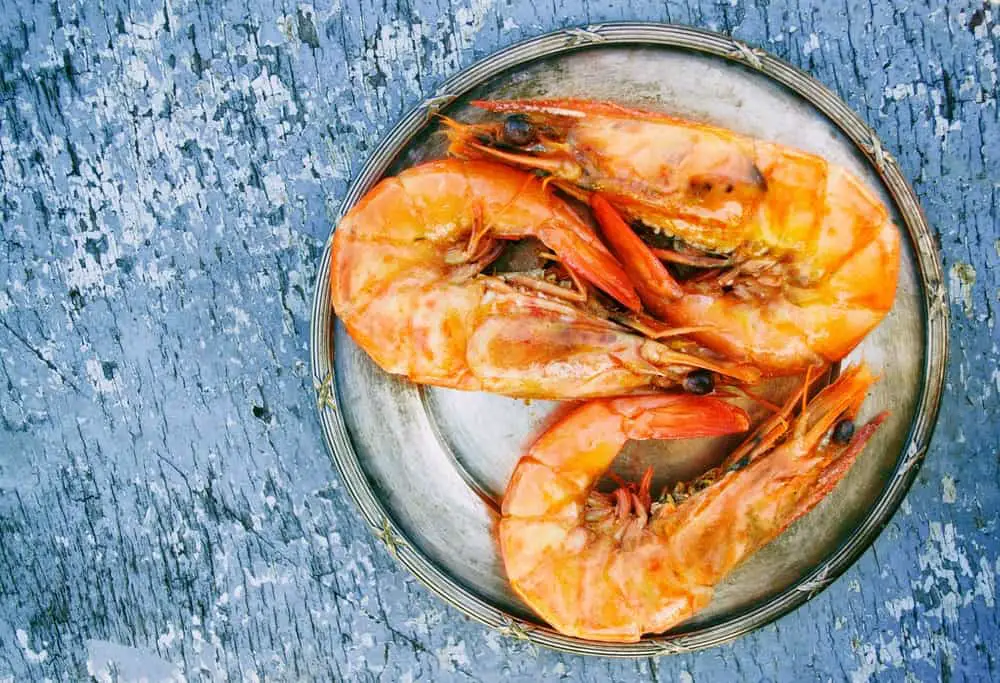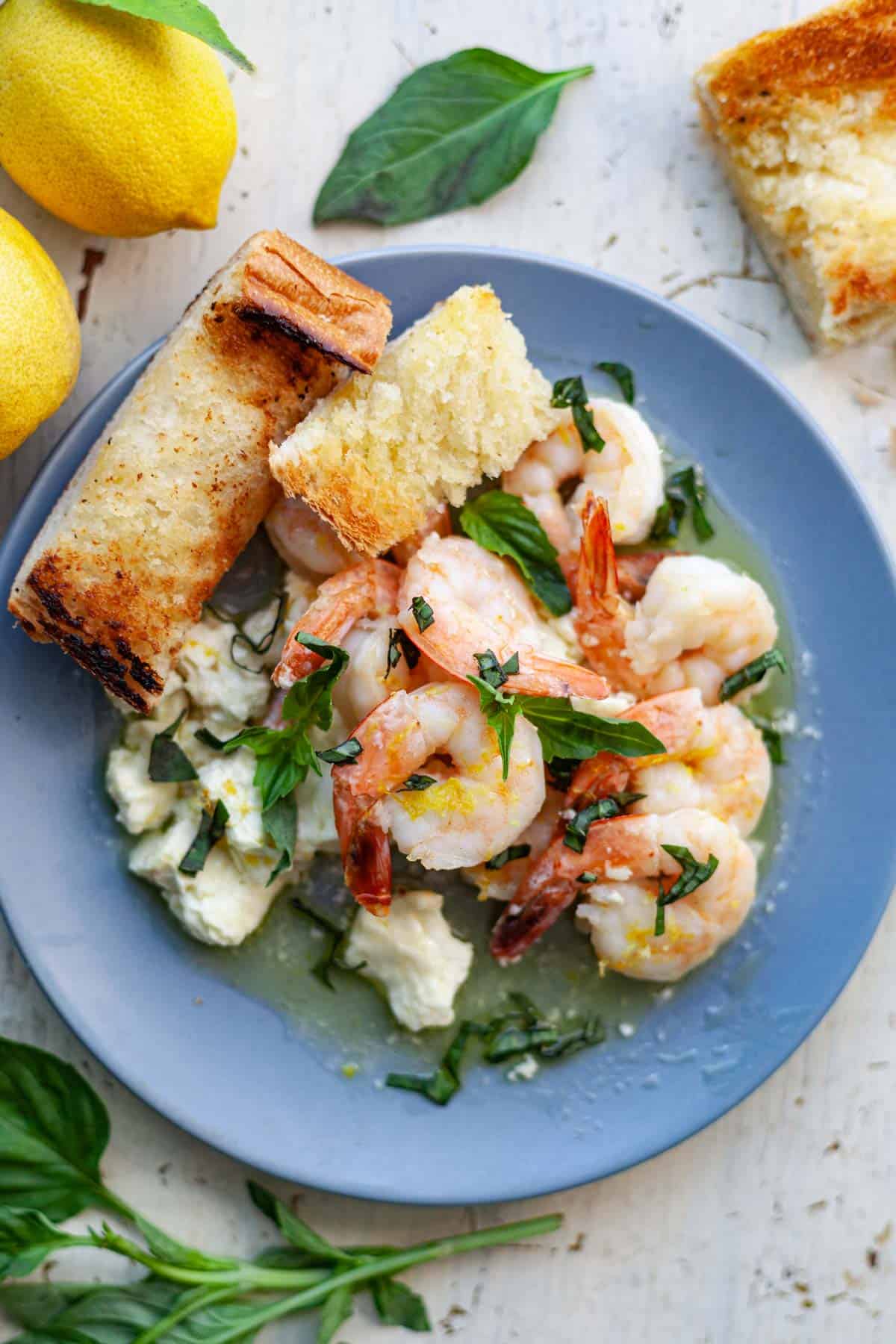Hey there shrimp lovers! I’ve been cooking seafood for years and let me tell you – reheating shrimp can be tricky. But don’t worry, I’m gonna share my tried-and-tested methods to bring those leftover steamed shrimp back to life without turning them into rubber bands!
Why This Guide Matters
Before we dive in, let’s be real – nobody wants to waste good shrimp. And if you’re like me, you’ve probably ruined a few batches by reheating them wrong The key is keeping them moist and heating them gently. Trust me, it makes all the difference!
Best Methods to Reheat Steamed Shrimp
1. Stovetop Method (My Personal Favorite!)
This is hands-down the best way to reheat shrimp. Here’s what you’ll need:
- A skillet or sauté pan
- Water or broth (about 2 inches)
- Optional: lemon, white wine, or salt for extra flavor
Steps
- Pour liquid into the pan
- Heat until almost boiling (but not quite!)
- Turn off the heat
- Add your shrimp
- Let them warm up for 1-2 minutes
Pro tip: I like adding a splash of white wine to the water – makes the shrimp taste amazing!
2. Oven Method (Best for Large Portions)
Perfect when you’re reheating lots of shrimp at once:
- Preheat oven to 300°F
- Spread shrimp in single layer on baking sheet
- Add a few tablespoons of water
- Cover tightly with foil
- Heat for 10-15 minutes
Important: Don’t leave them in too long! Set a timer – seriously!
3. Gentle Sauté Method
Great for shrimp that’s part of another dish:
- Heat pan over medium-low heat
- Add a bit of butter or oil
- Gently warm shrimp for 1-2 minutes
- Cover and let rest for another minute
What NOT to Do
Listen up, these are the biggest mistakes people make:
- ❌ Don’t microwave! (Unless you want rubber bands)
- ❌ Avoid high heat
- ❌ Never reheat multiple times
- ❌ Don’t leave them heating too long
Storage Tips for Next Time
To make reheating easier:
- Store properly in airtight container
- Use within 3-4 days
- Let cool completely before refrigerating
- Keep track of when you cooked them
Bonus Tips from My Kitchen
- Room Temperature Trick: Let shrimp sit out for 5-10 minutes before reheating
- Moisture is Key: Always add some liquid when reheating
- Check Early: Better to heat gradually than overcook
- Cold Option: Sometimes eating them cold is better than risking overcooking!
How to Tell If Reheated Shrimp Are Done Right
Your reheated shrimp should:
- Feel warm but not hot
- Maintain their original texture
- Look plump, not shrunken
- Curl naturally, not tight C-shapes
Serving Ideas for Reheated Shrimp
Make your reheated shrimp shine with these ideas:
- Toss in pasta
- Add to salads
- Make quick tacos
- Mix into stir-fry
- Create a quick shrimp cocktail
Final Thoughts
Reheating steamed shrimp isn’t rocket science, but it does need a bit of care. I’ve messed up plenty of times before getting it right! The stovetop method is my go-to, but any of these methods will work if you’re careful with the heat and timing.
Remember, when in doubt, lower heat and shorter time is better than rushing and ruining your seafood. And hey, if all else fails, cold shrimp are pretty darn good too!
P.S. Don’t forget to check out our other seafood reheating guides if you found this helpful!

The Best Way to Reheat Shrimp
A gentle reheating method that keeps shrimp moist is the best way to reheat cooked shrimp. I find that the stovetop usually works best.
However, no matter what cooking method you use for reheating shrimp, keep these two tips in mind:
- Add Liquid: Broth or water helps shrimp stay moist while it reheats.
- Cover the shrimp: For some reheating methods (like the oven or microwave) cover the shrimp tightly to trap moisture while it reheats.
Option 1: Gentle Simmer This stovetop method works well if youre reheating cooked shrimp without any other ingredients.
- Fill a saute pan with about 2 inches of broth or water. Tip: You can add more flavor to water by adding a pinch of salt, squeeze of lemon or splash of white wine.
- Heat the liquid until its almost beginning to boil. You want the liquid to be hot, but not boiling hot.
- Turn off the heat.
- Add the shrimp to the liquid just long enough to reheat (this should happen quickly).
Option 2: Saute This method works well for shrimp that you dont want to simmer in liquid, and/or shrimp that are mixed in with other ingredients.
- Warm a wide saute pan over medium heat with a generous drizzle of oil.
- When the oil has warmed, add the shrimp and other ingredients.
- Saute gently until the shrimp and other ingredients are mostly heated.
- Turn off the heat and cover the pan with lid for the last minute or two, to trap moisture while the food finishes reheating.
I sometimes use the oven if Im reheating a large amount of shrimp and other ingredients.
- Heat oven to 300 F
- Spread the shrimp out in a single layer on a rimmed sheet pan or baking dish. Ideally, heat other ingredients in a different baking pan.
- Add a few tablespoons of warm water to the sheet pan.
- Cover the sheet pan tightly with foil.
- Heat for about 10 to 15 minutes
Tip: If necessary you can heat shrimp with other food in the same baking dish, but the shrimp are likely to finish reheating first and will get dry and overcooked if left in the oven too long.

Answers to All Your Questions About Reheating Shrimp
My favorite method is the first one in the blog post above: a gentle simmer on the stovetop. I like this method because the heat is gentle and the shrimp warm quickly in liquid without drying out.
I find that the microwave makes cooked shrimp very rubbery. If you have to reheat shrimp in the microwave, cover the dish and reheat it for the shortest time possible.
Ideally, reheat the rice or pasta separately then add the shrimp back in. The reheated rice or pasta will gently warm the shrimp. Otherwise, you have two options – follow the stovetop saute method in the blog post above, or the oven method. Either way, add a little bit of water to the rice or pasta, use a lid to trap moisture, and expect to add a little butter or oil after the dish has reheated.
Breaded shrimp can be reheated in a toaster oven, or sauteed in a pan with a drizzle of oil. Dont add liquid or use a lid, it will just make the coating soggy.
Overcooked shrimp curl into a tight “C shape. The texture is dry and rubbery.
Foodsafety.gov says shrimp are fully cooked when the “flesh is pearly or white, and opaque.” Look for the color to change from grayish and translucent to an opaque white, and the pinkish parts will get darker. Shrimp cook very quickly, often in just a few minutes. The thickest part of the shrimp, where it curves on the back, is the part to watch. When that turns opaque and white, the shrimp are done.
Assuming that the raw shrimp were fresh to begin with and then cooked to a safe temperature, cooked shrimp will stay fresh in the refrigerator for about 4 days. Its not a good idea to cook shrimp, then reheat it, and then put it back in the refrigerator and reheat it again later.
And dont forget, shrimp is delicious cold. Sometimes the best solution is to eat leftover shrimp without reheating it at all!
How to Cook Already Cooked Shrimp Safely & to Retain Flavour?
FAQ
What is the best way to reheat steamed seafood?
Use a double boiler. If not take a pot and put some water in it. Put the seafood in a strainer and put on top the pot but not in the water. Cover it and let it steam for 10/15 minutes or so.
Can you eat leftover steamed shrimp?
Cooked shrimp lasts for 3 to 4 days in the refrigerator. – When reheating leftover shrimp, it’s best to use a low temperature to avoid the rubbery texture shrimp can get when overcooked. Alternatively, enjoy leftover cooked shrimp cold or at room temperature, depending on how it was prepared.Jul 14, 2023
How to warm cooked shrimp without overcooking?
Tip #1: Turn Down the Heat – Because shrimp can overcook easily, you want to be gentle when reheating, and not blitzing the shrimp with heat is key. So, when you reheat, be sure to use a lower temperature. For example, “If you use a microwave, the power level should be lower,” explains Kenniff.Apr 21, 2022
Is shrimp good reheated the next day?
Can I reheat cooked shrimp? Yes! Overcooked shrimp has a rubbery texture, so keep your shrimp succulent by allowing it to reach room temperature first, then reheat it on a low heat using the same cooking method as you used originally. If you are reheating in a pan, add a little water to avoid it drying out.Jul 24, 2023
